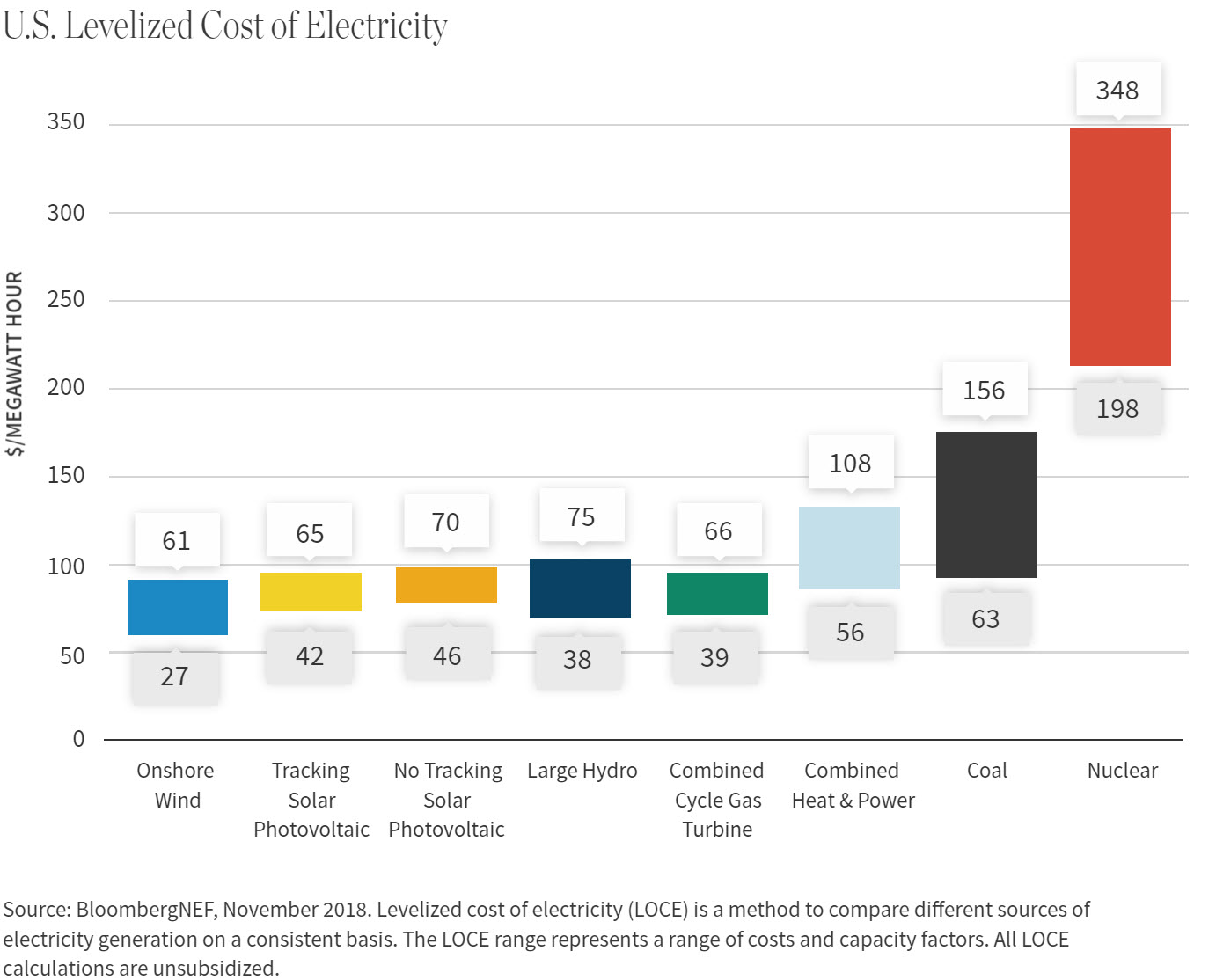Renewable energy is now a long-term growth story.
Investors, businesses, governments worldwide—alarmed by the effects and costs of climate change—are embracing clean energy solutions as a path to lower CO2 emissions.
That demand has spurred innovation in the U.S. renewable energy sector over the past 10 years, so much so that renewable sources like solar and wind are not just the cheapest but also the fastest-growing sources of electricity today.

"Renewables are a growth engine for the economy," said Alaina Anderson, a research analyst with William Blair's investment management group who specializes in renewables.
"It's jobs, it's technology," she adds. "The technology has developed so rapidly in the U.S. that generally the cost of generating electricity from onshore wind and solar is lower than generating electricity from coal."
Renewables have accelerated their inroads in the energy complex in the last decade. In electricity production, renewable sources accounted for 17% of total U.S. output in 2018, according to the U.S. Energy Information Administration (EIA). Coal, which accounted for half of American electric output in 2008, is down to a 28% share a decade later.
The fastest-growing jobs in the U.S. are installers of solar panels and wind turbines, according to the Bureau of Labor Statistics in September. Starting 2018 pay for these were in the $40,000-$50,000 range with full benefits for applicants with just high school diplomas.
Moreover, most of these opportunities can be found in rural America. Texas is now the No. 1 wind energy state while Oklahoma and Iowa derive more than 30% of their electric power from wind.
Renewables are a growth engine for the economy.
Jobs, market economics, and greener lifestyle choices of boomers to millennials also suggest that the deep roots renewables have spread from coast to coast are growing even as the Trump administration rejects the landmark 2015 Paris Climate Accord's goals to cut CO2 emissions.
"The cat is already out of the bag in the U.S.," said Anderson. "States, the public and private sectors have galvanized around decarbonizing the energy mix."
"There's every indication that America will still meet the Paris agreement's targets by 2030 despite the lack of commitment from Washington—driven by the will of the people."

Cheap energy reshaping expectations
As renewable energy has become more efficient and competitive more and more companies—NextEra, Neste, Enel, Orsted to name a few—say they'll continue to expand their renewable energy business because it's good for their bottom lines as well as the environment.
For example, Denmark-based offshore wind developer Orsted transformed itself from one of Europe's most coal-intensive power utilities into a renewable energy powerhouse in less than a decade. It plans to phase out coal by 2023 and is now moving into the U.S. wind market after buying Deepwater Wind, an offshore wind developer with projects along the Eastern Seaboard, last year.
Meanwhile consumers of energy—big and small—are weaning themselves off fossil fuels.
Amazon CEO Jeff Bezos announced in September a goal to have 80% of the company's energy sourced from renewables by 2024, up from 40% today. Amazon plans to buy 100,000 electric delivery vans, with the first vans on the road by 2021. Bezos also challenged other companies to join Amazon in pledging to have net zero carbon emissions by 2040, a decade ahead of the Paris Accord's goal.
A Bloomberg New Energy Finance study released in June projected that at present trends the world will move from sourcing two-thirds of its energy from fossil fuels in 2018 to two-thirds zero-carbon energy by 2050, with wind and solar supplying nearly half the world's electricity by then. Coal-fired energy will fall by 51%, the study estimates, supplying just 12% of world electricity.
While the U.S. is a hive of renewable energy it is no longer the world leader. China is the top investor in clean energy today while Europe leads in adopting renewable initiatives. Of the nearly $290 billion invested in renewable energy in 2018 worldwide, China accounted for most of it at $91 billion, according to a 2019 study published by REN21, a global renewable-energy think tank.
"There are days in Germany when the cost of wind power is zero because of how efficient the wind farms have gotten and how much supply there is when it's windy," Anderson said. In the UK, she says, there are even days when the country uses no coal-based power. The UK is also implementing policies where only electric vehicles will be allowed in certain parts of the nation.
Already, London has banned petrol, diesel, and older hybrid cars from nine streets during morning and evening rush hours in the city's first "ultra-low emissions zones." The UK went through a two-week coal free period in May where no coal was used to generate electricity. Renewables generated a record 65% of the electricity in Germany, Europe's No. 1 industrial nation, during one week in March.
...when considering the investable universe in the energy sector, we need to move past the traditional silos of energy and utilities in acknowledgement of the large-scale energy transition that is taking place.
Reshaping the future for investors
The accelerating growth story of renewables is changing the way investors are evaluating companies as well as the energy sector itself.
The integration of renewable fuels into the transportation market and sourcing of more decentralized renewable electricity sources into the grid means that utilities are being re-imagined.
"The energy sector in its current incarnation has gone from say 15% of the S&P 500 to under 6%," Anderson said. "If we continue on this path, energy will continue to decline in relevance while utilities will continue to increase because that's where renewables live."
Anderson said the shape of the renewable energy sector will keep evolving, including the role of governments and of the existing powerful fossil-fuel companies.
"In that context we should be thinking about what energy is to us as growth investors," she says. "For us, energy sector investments are less and less about fossil and more and more about onshore/offshore wind, solar, and hydro."
"This is going to be an ongoing thought process for our investment team," Anderson adds.
"Our contention is that when considering the investable universe in the energy sector, we need to move past the traditional silos of energy and utilities in acknowledgement of the large-scale energy transition that is taking place."
Fed Conference Highlights Climate Change Threats
The Federal Reserve held its first conference on November 8 to discuss climate risks to the financial system, economy, and society.
The meeting, hosted by the San Francisco Fed, spotlighted the "current and future risks" of weather-related catastrophes on everything from the Fed's cash payments system and dependence on reliable electric power to climate-linked migrations and disruptions of whole communities.
"Climate change is an economic issue we can't afford to ignore," San Francisco Fed President Mary Daly said at the meeting, citing estimates of $50 billion in weather-related losses paid by insurers in 2018 alone—an amount that nearly doubled if uninsured losses are included.
"Sea level changes are disrupting communities from San Diego to Alaska. Preemptive power outages and wildfires in populated areas of California are a new way of life," Daly said. "We have to understand climate risks if we're going to effectively serve the public."
The 10 economic studies presented during the day-long conference included a discussion of "carbon risk" and carbon taxes as a way of reining in fossil fuel emissions and hastening the transformation of world energy consumption to renewable energy.
"This just isn't a concern for the 12th district or just the United States," Daly said. "Countries around the world are dealing with the economic impacts of climate change."


